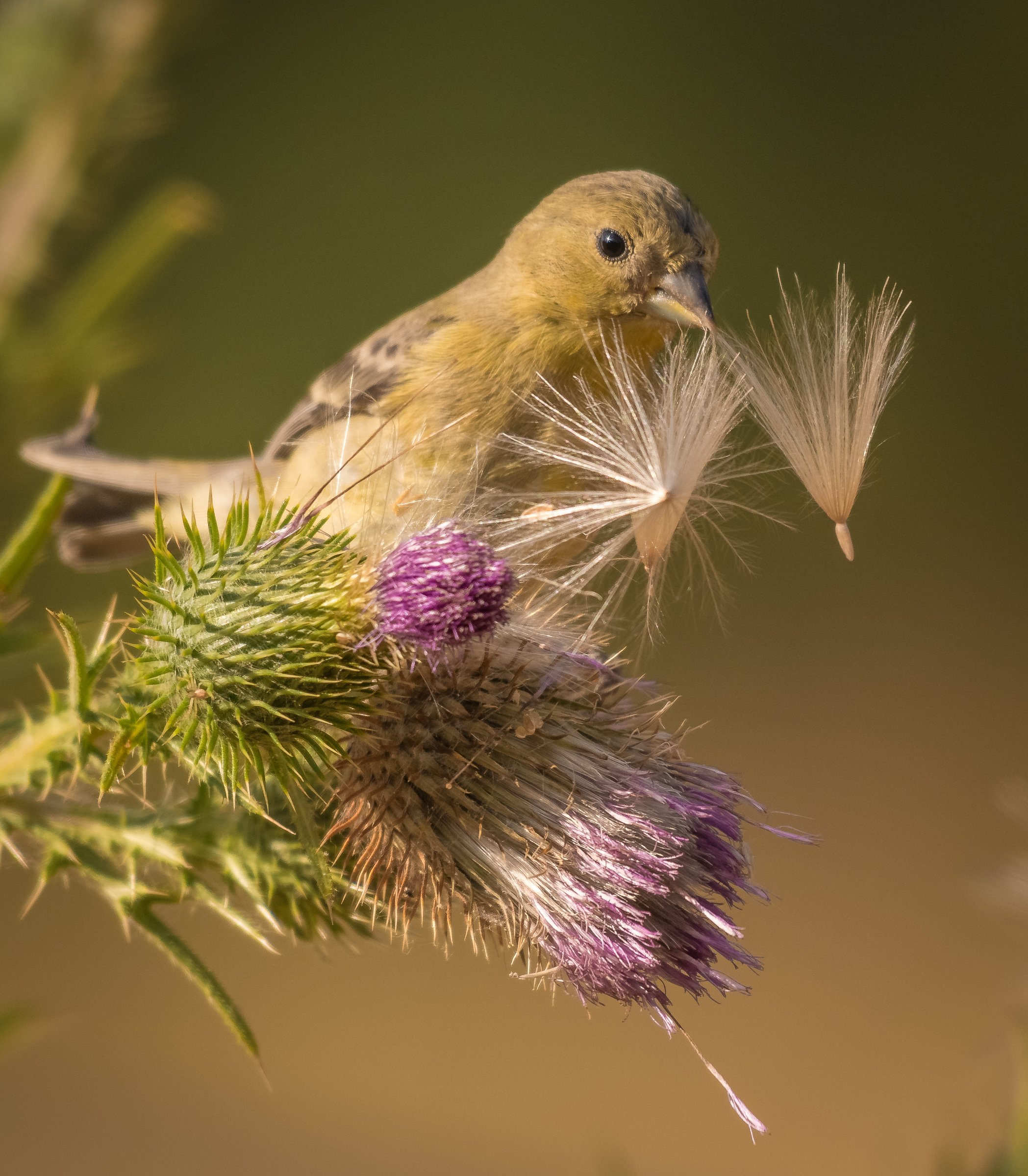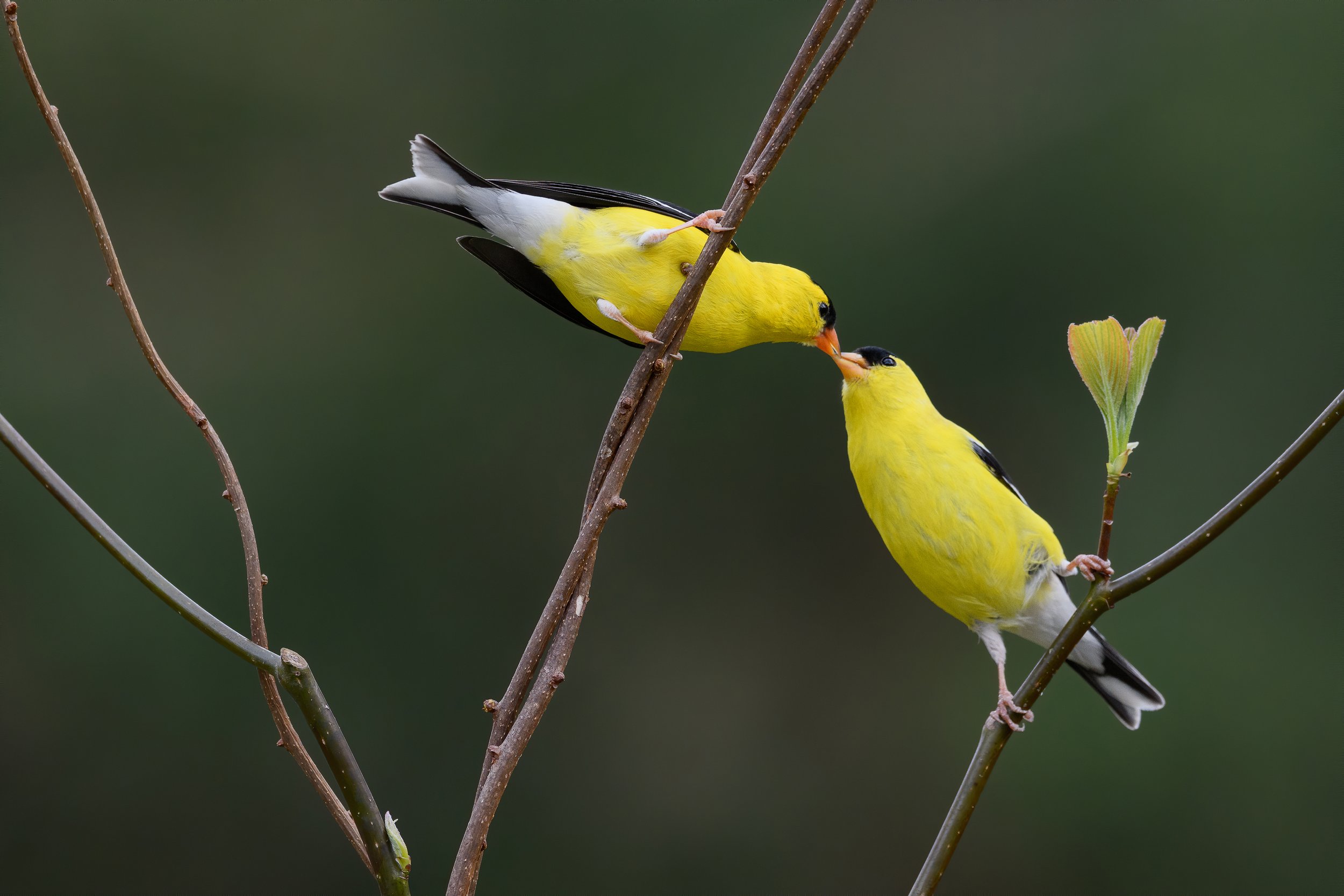Audubon at Home Sanctuary Species: American Goldfinch (Carduela tristis)
American Goldfinch (male) on Purple Coneflower by Will Stuart
Common and gregarious, the American Goldfinch is a year-round resident of the Mid-Atlantic Region. Males in spring and summer are bright yellow, the only small songbird with a black cap, black wings and tail. Females are duller, an olive yellow with dusky wings. In winter, males lose their black caps and assume the same dull plumage as females. Both have 2 white wingbars and notched tails. Most of the year, they live in mixed flocks and fly in deeply undulating flight, singing per-CHICK-o-ree.
To learn more about ID, range, breeding, and voice, visit Cornell’s All About Birds
| What American Goldinches Need | How Can We Help |
|---|---|
| Food and Water: Goldfinches are almost exclusively seed eaters, feeding on seeds of birches, alders, conifers, thistles, goldenrods, asters, dandelions, etc. They will come to gardens for coreopsis, coneflowers, Black-eyed susans, and sunflowers. Because of their seed diet, Goldfinches require access to plenty of water to drink. |
|
| Shelter: Females incubate the eggs and will sleep in the nest during breeding season. At other times of the year, both the male and female will take shelter in shrubs and leafy canopies of larger trees. |
|
| Nesting: These birds nest in July and August, later than most other songbirds in the region. Shrubby thickets, deciduous saplings, or mature trees in isolation or on forest edges, provide most common nesting cover. Females build nests in forks of sapling hardwoods, four to fourteen feet above the ground on average, often within a hundred yards of thistle-seed food source. The nest is lined with thistledown and milkweed down. Nestlings are raised entirely on seeds, partially digested by adults and regurgitated. |
|
Other threats: Cats are one of their main predators. |
|
Where to see American Goldfinches and their Habitat:
Bles Park (Loudoun County), Manassas Battlefield Park (Prince William County), Occoquan Bay National Wildlife Refuge (Fairfax)
Find more using eBird Data: Narrow the view by entering your county in the “DATA FOR:” filter





